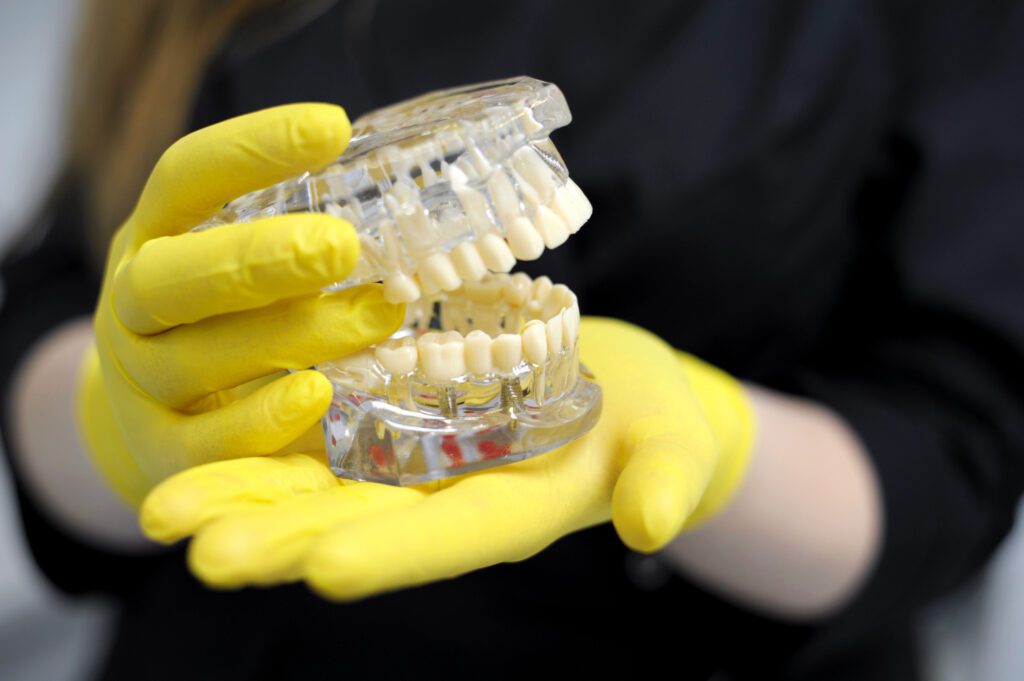
Toothpaste is an essential part of a daily oral hygiene routine, and choosing the right toothpaste can be key to maintaining good oral health. One of the key ingredients in toothpaste is fluoride, a mineral that has been widely used to prevent tooth decay. However, many people are not aware of how this chemical actually works to protect your teeth. Read on to delve into the science behind toothpaste and explore how fluoride and other chemicals play a role in keeping your smile bright.

Teeth are made up of three layers: enamel, dentin, and pulp. Consisting of 95% minerals, tooth enamel is the hardest substance in the human body (for comparison, the mineral composition of bone is around 40%). It’s primarily composed of calcium, phosphorus, and hydroxide in a crystalline material known as hydroxyapatite. Dentin is softer than enamel, consisting of a significant amount of collagen as well as hydroxyapatite, and acts as the support structure for the tooth. Pulp, the innermost layer of a tooth, is made up of connective tissue, nerves, and blood vessels which connect to the rest of your bodily systems.
Tooth decay occurs when the enamel has dissolved and weakened due to sugars and acids remaining on the enamel surface. Enamel can break down to the point where bacteria can invade the dentin layer and form cavities. Decaying teeth can become riddled with holes, change colour from yellow to brown to black, and cause pain, difficulty eating, and even infections.

The body cannot self-repair the damage and dissolution of tooth enamel, so it is vitally important that you take good care of your teeth throughout your entire life. Toothpaste is the frontline defence against tooth decay, and the key to this is fluoride.
Most commonly present in the form of sodium fluoride or stannous (tin) fluoride, this ion interacts with the mineral components of teeth to keep them strong. While drinking water is fluoridated in many regions of the world to assist with dental health, fluoride-containing toothpaste will typically provide 1000 times more fluoride to the surface of your teeth. Fluoride works to protect your teeth through a concept called ion exchange—replacing hydroxide ions in the enamel lattice, thereby increasing the density of enamel and decreasing the solubility from food acids. It can also interact with bacteria to reduce the creation of plaque.
Fluoride-free toothpastes will often use triclosan as an alternative to remove decay-causing bacteria from your enamel. However, triclosan is less effective at actually making teeth stronger and has concerned some regulators as to the safety of long-term use, as well as the potential that triclosan is contributing to antibacterial resistance.
Aside from protecting your enamel, there are several other functions to toothpaste—such as whitening, desensitisation, and abrasion to remove plaque build-up.
Most whitening toothpastes will contain peroxides in some form. Peroxides will chemically remove discoloration in the same way bleach will remove stains from your bathroom tiles. Abrasive agents like silica or alumina will physically scrape away plaque and stains with the help of your toothbrush bristles.
For sensitive teeth, chemicals such as potassium nitrate and strontium chloride will help block the transmission of sensations of pain from hot or cold stimuli from getting to the nerve. Fluoride also helps with sensitivity, as stronger enamel will act as a protective barrier between your nerves and painful sensations.

In addition to functional ingredients, there are many chemicals inside toothpaste that are used to give toothpaste its typical taste and texture. Sodium saccharin is a carbohydrate-free sweetener—around 300-400 times sweeter than sugar—and contributes to the typical sweet taste of toothpaste, without providing a feeding ground for bacteria like true sugars do. Other colouring and flavouring agents are added to contribute to a pleasant look and taste.
Many chemicals are not safe to be inhaled, consumed, or applied to skin. To avoid accidental consumption, mishandling and misidentification, chemicals should be accurately labelled, tracked, and stored. For assistance with this, and chemical and hazardous material handling, SDS, labels, Risk Assessment, and heat mapping, contact us today!
Sources:
https://cosmosmagazine.com/podcast/toothpaste-ingredients-science-briefing/
https://en.wikipedia.org/wiki/Tooth_decay
https://www.dentalcare.com/en-us/ce-courses/ce94/mechanism-of-action-of-fluoride
https://www.teeth.org.au/whitening-toothpaste
https://www.healthline.com/nutrition/saccharin-good-or-bad https://www.healthline.com/health/dental-and-oral-health/desensitizing-toothpaste